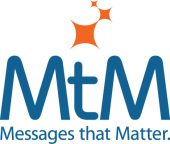Lack of differentiation is a common problem in B2B technology marketing. A little less common but more problematic is a failure to make it clear on the home page what a company’s product is and what it does. I can’t tell you how many web sites I’ve visited recently that make it almost impossible to figure out the company’s product category (what is it?) and what it does.
For example, a B2B software company that has acquired several companies provides “actionable intelligence” solutions. “Own the customer experience” is all that you’ll find on the home page of a company that sells marketing software into several verticals. A company that sells “master data management” software has nothing on its home page except that it is recognized as a leader (in what it doesn’t say) by the Gartner Group.
Rotating panels can really confuse a web site visitor
Many companies use rotating panels on their home page to really confuse visitors and scare them away. Each panel usually has an unrelated message which is often vague about what the company does. Visitors may need to see several panels before they figure it out or they may need to take a deep dive into the site, a journey many won’t take.
It’s as if these companies think prospects know all about their products or services. Instead, they flunk positioning basics – make it easy for prospects to know what you do and why they should care.
The best way to avoid confusion about what your product is and what it does is to answer these questions during your positioning process. I call them the three “what” questions:
- What is it?
- What does it do?
- What does it deliver?
Document your answers. The answer to the first two questions insures that writers and communicators have a guide when creating marketing materials, and avoid confusing the target market about what your product is and what it does. To learn more about my business process for positioning, go to the Messages that Matter web site and download my eBook – Positioning: How to talk so the market will listen.
Answering “what is it” should be easy
The “what is it” question is pretty easy to answer because typically your offering falls into an established category like CRM (customer resource management), accounting, ERP (Enterprise Resource Planning), BI (business intelligence), CPM (corporate performance management), etc.
It is essential that you make it easy for prospects to recognize the product category into which your offering falls. Make it obvious. Tell them immediately or they’ll leave your web site. Ideally, you can place your company or offering into an existing category or one that represents a natural evolution.
If you attempt to define a new category, you run the risk of getting ahead of the market.
Former CRM market leader Siebel, now owned by Oracle, is an example of the pitfalls of creating a new product category. Let’s go back to the dot-com craze when Siebel was not content to dominate CRM. Instead, Siebel declared it provided e-Business solutions. Most of the target market was just beginning to understand CRM, but still didn’t have a clear idea of what CRM actually did or its benefit. Buyers back then had no clue what Siebel was talking about when it used the phrase “e-Business” in its marketing. That became a problem for Siebel, because while the company probably wanted to say it could do almost anything on the Internet, “e-Business” was at best confusing or even irrelevant to prospects. In reality Siebel just provided CRM solutions – sales force automation, call center service, customer and partner self-service, etc. Eventually Siebel retreated to its product category – CRM. Why? Corporations didn’t have a line-item capital expenditure for e-Business, but they did for CRM.
A short description of your offering’s functionality – what it does – can help prospects imagine how people in their companies might use it. For example, Apptio helps “understand and manage the cost, quality, and value of your IT services.”
A vendor of word processing software might claim that its product creates great looking document in minutes. Although such a statement might seem to express a benefit of word processing software, it actually describes an advantage over other ways of producing documents.
Avoid confusing “what it does” with “what it delivers”
B2B marketers frequently make a critical error by confusing what a product does – its advantage – with what a product delivers – its benefit. Naturally, prospects need to know the advantages of your product or service.
“What it delivers” is typically close to the right position for your product, service or solution. It should be a benefit statement, and answering this question gets you close to a potential positioning statement.
By describing the one important benefit that prospects will obtain from your product or service, you describe why they should care enough to consider purchasing it. For example, in the case of word processing software, the benefit of producing great looking documents is better communication. Don’t assume that prospects will make that connection on their own. Make the benefit clear to them, even if it seems obvious to you.
But your target buyers won’t get your message – no matter how compelling – if they can’t figure out what your product is and what it does.
